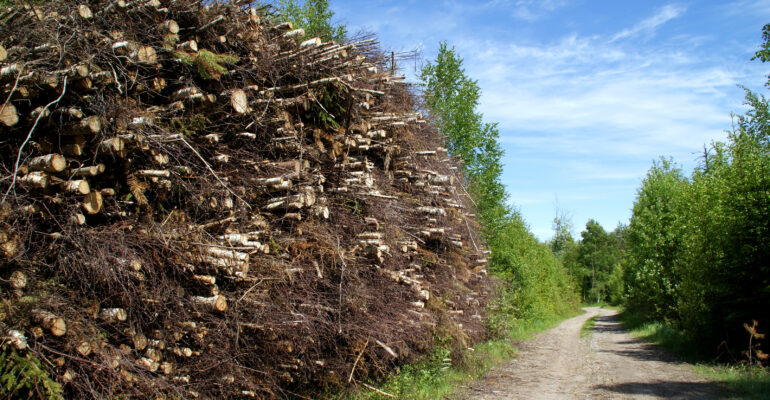News
Too hot to handle: Burning wood for heat emits more CO₂ than coal
New report reveals how bioenergy is accelerating the climate crisis. This article was originally published on the BirdLife International website here. A new BirdLife Europe report reveals that the increasing reliance on biomass for heating and cooling in Europe is harming the climate more than helping it. The report highlights how bioenergy, particularly
From Earth’s green lungs to grey smokestacks: how European forests became carbon emitters
Denmark’s reliance on biomass energy is driving deforestation, biodiversity loss, and increased carbon emissions in Estonia and Latvia. A new report co-authored by BirdLife Partner LOB (Latvian Ornithological Society) reveals that large-scale logging to supply Danish power plants is turning these crucial carbon sinks into carbon emitters, undermining Denmark’s reputation as a leader in green energy.
No smoke without fire: the impact of Denmark’s biomass energy on Estonian and Latvian forests
Denmark’s reliance on biomass energy is driving deforestation, biodiversity loss, and increased carbon emissions in Estonia and Latvia. A new report co-authored by BirdLife Partner LOB (Latvian Ornithological Society) reveals that large-scale logging to supply Danish power plants is turning these crucial carbon sinks into carbon emitters, undermining Denmark’s reputation as a leader in green energy.
Forest Monitoring Law: why an EU-wide framework is crucial for understanding our forests
Forest Monitoring Law: why an EU-wide framework is crucial for understanding our forests Written by Riccardo Gambini and Erica Gentili – Cover picture by Lars Soerink Following the European elections, discussions about the European Commission’s proposal to establish a common monitoring framework for resilient forests, the Forest Monitoring Law (FML),
The vital role of protecting European forests in the National Energy and Climate Plans
The vital role of protecting European forests in the National Energy and Climate Plans Written by Riccardo Gambini, edited by Erica Gentili Time has run out for Member States to submit their final version of the updated National Energy and Climate Plans (NECPs), yet only a small number of EU
Bioeconomy: the grass is not always greener on the “bio” side
While the term “bioeconomy” hints at a green and natural alternative to the fossil economy, built on biological resources and therefore sustainable, its application comes with a much more problematic reality. The ecosystems from which these resources come are already dramatically overused; an increasing demand for biomass would pose additional pressure on global ecosystems and the people who depend on them.
A new EU Framework for Forest Monitoring and Strategic Plans of EU Forests
As part of the Forest Strategy for 2030, the European Commission published a new proposal for Forest Monitoring and Strategic Plans of EU Forests in 2023. This proposal aims at “developing an EU-wide forest observation framework to provide open access to detailed, accurate, regular, and timely information on the condition and management of EU forests, and on the many products and ecosystem services that forests provide” . As Birdlife, we participated in the feedback consultation on the proposal as we strongly support this new framework. In the scope of the current ecological crisis, the law is essential to make sure of an effective implementation process of the existing legislation and the commitments taken by Member States. This article examines the pressing need for improved forest monitoring, the potential of the proposed framework, and areas that need to be refined.
Biomass in the Renewable Energy Directive: all smoke and no fire?
In March 2023, European leaders reached an agreement on new limits for the use of forest biomass under the EU’s Renewable Energy Directive (RED). The agreed version of the law was made official following the adoption by the European Parliament and the Council. This policy aims to eliminate subsidies for energy generated by burning certain categories of forest wood, and disqualify burning wood from primary and old-growth forests from counting toward renewable energy targets. However, the agreement contains numerous loopholes and derogations that will allow business as usual on the ground.
EU Parliament votes to limit support for wood burning
On September 14, the European Parliament voted on the latest revision of the Renewable Energy Directive (RED). In addition to increasing Europe’s renewable energy target to 45%, Parliament also voted on the extent to which wood burning and biofuels should continue to be promoted and counted towards renewable targets.










